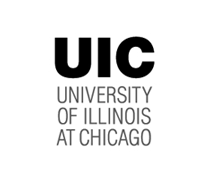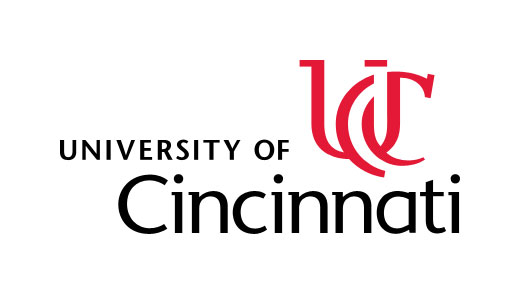Bone Marrow Aspirate Concentrate (BMAC) for Treatment of Critical Limb Ischemia (CLI)
| Status: | Completed |
|---|---|
| Conditions: | Peripheral Vascular Disease, Cardiology |
| Therapuetic Areas: | Cardiology / Vascular Diseases |
| Healthy: | No |
| Age Range: | 18 - Any |
| Updated: | 10/14/2017 |
| Start Date: | May 2011 |
| End Date: | November 2015 |
Pivotal Study of the Safety and Effectiveness of Autologous Bone Marrow Aspirate Concentrate (BMAC) for the Treatment of Critical Limb Ischemia Due to Peripheral Arterial Disease
Critical Limb Ischemia prevents the legs and feet from receiving oxygen and nutrients needed
for proper function. This severe lack of blood flow can lead to painful legs while walking or
at rest and can result in foot sores, ulcers, gangrene, and even amputation. The purpose of
this study is to determine if injections of concentrated bone marrow into damaged tissues
will result in improved blood flow. If successful, this treatment could improve blood flow to
the lower limb, reduce pain, and reduce the frequency of limb amputations.
for proper function. This severe lack of blood flow can lead to painful legs while walking or
at rest and can result in foot sores, ulcers, gangrene, and even amputation. The purpose of
this study is to determine if injections of concentrated bone marrow into damaged tissues
will result in improved blood flow. If successful, this treatment could improve blood flow to
the lower limb, reduce pain, and reduce the frequency of limb amputations.
Bone marrow aspirate is collected and processed by centrifugation to remove red blood cells.
The resulting concentrate of cells is injected into ischemic tissues of the lower limb. The
purpose of this study is to determine if injections of concentrated bone marrow nucleated
cells into ischemic tissues will result in vasculogenesis.
The resulting concentrate of cells is injected into ischemic tissues of the lower limb. The
purpose of this study is to determine if injections of concentrated bone marrow nucleated
cells into ischemic tissues will result in vasculogenesis.
Inclusion Criteria:
- Patient has Peripheral Arterial Occlusive Disease (PAOD) with clinical Rutherford
Category 5 disease, as defined in the reporting standards adopted by the Society of
Vascular Surgeons(table 1); Minor Tissue loss-focal gangrene with diffuse pedal
ischemia
- Patient meets at least one of the following diagnostic criteria in the study limb:
- Ankle artery occlusion pressure absolute ≤60 mmHg or ABI ≤0.6
- Toe artery occlusive pressure < 50mm Hg or TBI ≤0.6
- There is no reasonable open surgical or endovascular revascularization option as
determined by the treating vascular specialist. Factors that may contribute to the
determination of inoperability may include:
- Anatomical considerations
- No outflow targets
- No appropriate conduit (i.e. vein for bypass)
- Long segment occlusions or calcified lesions that predict poor outcome with
endovascular approaches.
- High risk medical conditions i.e. Unstable cardiac disease.
- History of prior failed revascularization attempts
- The Patient's case was reviewed at the treating institution's Multidisciplinary
Vascular Conference where the patient's status as a poor candidate for conventional
therapies was confirmed.
- Age ≥18 years and ability to understand the planned treatment
- Subject has read and signed the IRB approved Informed Consent form
- Patients for whom the following medication(s) is prescribed must have a one month
stable baseline therapy prior to enrollment: Plavix/asprin therapy, anticoagulation
therapy, cholesterol lowering agent, and or blood pressure medication. If any of these
medications are not prescribed notation of the reason for omission is to be provided.
- Hematocrit ≥ 28.0%, White Blood Cell count ≤ 14,000, Platelet count ≥ 50,000,
Creatinine ≤ 2.5 mg / dL, INR ≤ 1.6 unless on Coumadin, or PTT <1.5 x control (to
avoid bleeding complications) Patients on Coumadin will be corrected prior to the
procedure and must have an INR<1.6 at the time of randomization/surgery.
Exclusion Criteria:
- Life expectancy <6 months due to concomitant illnesses
- History of bone marrow diseases (especially NHL, MDS) that prohibit transplantation
- Terminal renal failure with existing dependence on dialysis or serum creatinine >2.5
mg/dL
- Known active malignancy or results outside of normal limits from the following tests:
PAP, Chest X-ray, PSA, Mammogram, Hemocult unless follow-up studies reveal patient to
be cancer free.
- Poorly controlled diabetes mellitus (HgbA1C>10%)
- Medical risk that precludes anesthesia (conscious sedation), or ASA Class 5
- Life-threatening complications of the ischemia necessitating immediate amputation
- Uncorrected occlusion of the common or external iliac artery on index side
- Absence of any pulsatile Doppler flow below the ankle.
- Extensive necrosis of the index limb or other conditions that make amputation
inevitable (Rutherford Category 6).
- Ulceration with exposed bone proximal to the distal metatarsal heads (ie. heel or mid
foot)
- Active clinical infection or infection being treated by antibiotics within one week of
enrollment
- Treatment with immunosuppressant drugs (including Prednisone > 5 mg per day).
- Female who is pregnant or nursing, or of child bearing potential and is not using a
reliable birth control method.
- Underwent a major open cardiovascular surgical procedure (carotid endarterectomy,
arterial aneurysm or bypass surgery, or coronary artery bypass surgery) or a
myocardial infarction within the 3 months prior to randomization
- Underwent a successful or partially successful endovascular intervention for
peripheral arterial occlusive disease. (ie. Aorta, iliac, femoral, popliteal, or
tibial artery angioplasty, stenting, or atherectomy) within the prior 3 months.
- Endovascular coronary intervention (ie. Angioplasty, atherectomy, stenting) within 1
month prior to randomization.
- Underwent a failed attempt for endovascular revascularization during the prior 1
month. For the purpose of this exclusion criteria an endovascular procedure is
considered a failure if:
1. The procedure is diagnostic only with no intervention performed, (for example in
the case where wire crossing can not be obtained).
2. The treated artery recoils, thromboses, or dissects resulting in occlusion of the
treated arterial segment, documented by intraoperative imaging. Note that
endovascular procedures with suboptimal results but not meeting criteria 1 or 2
above may qualify for inclusion after 3 months as in #16 above.
- Cerebrovascular accident within 6 months prior to randomization.
- Treatment with topical growth factors or hyperbaric oxygen (HBO) within 30 days, or
systemic growth factor treatment within 6 months of enrollment.
- Known hypersensitivity to heparin; or history of heparin-induced thrombocytopenia
(HIT).
We found this trial at
34
sites
Click here to add this to my saved trials
Tufts Medical Center Tufts Medical Center is an internationally-respected academic medical center – a teaching...
Click here to add this to my saved trials
University of North Carolina at Chapel Hill Carolina’s vibrant people and programs attest to the...
Click here to add this to my saved trials
Click here to add this to my saved trials
Maine Medical Center One of the country's consistently highest rated hospitals is right in your...
Click here to add this to my saved trials
3181 Southwest Sam Jackson Park Road
Portland, Oregon 97239
Portland, Oregon 97239
503 494-8311

Oregon Health and Science University In 1887, the inaugural class of the University of Oregon...
Click here to add this to my saved trials
Rhode Island Hospital Founded in 1863, Rhode Island Hospital in Providence, RI, is a private,...
Click here to add this to my saved trials
Johns Hopkins Hospital Patients are the focus of everything we do at The Johns Hopkins...
Click here to add this to my saved trials
Click here to add this to my saved trials
Cooper University Hospital Cooper University Health Care, the clinical campus of Cooper Medical School of...
Click here to add this to my saved trials
Click here to add this to my saved trials
Click here to add this to my saved trials
University of Illinois at Chicago A major research university in the heart of one of...
Click here to add this to my saved trials
University of Cincinnati The University of Cincinnati offers students a balance of educational excellence and...
Click here to add this to my saved trials
Click here to add this to my saved trials
Click here to add this to my saved trials
Click here to add this to my saved trials
Click here to add this to my saved trials
Click here to add this to my saved trials
Click here to add this to my saved trials
Dartmouth Hitchcock Medical Center Dartmouth-Hitchcock is a national leader in patient-centered health care and building...
Click here to add this to my saved trials
Click here to add this to my saved trials
Click here to add this to my saved trials
Click here to add this to my saved trials
Click here to add this to my saved trials
Click here to add this to my saved trials
Click here to add this to my saved trials
Click here to add this to my saved trials
Click here to add this to my saved trials
Click here to add this to my saved trials
Click here to add this to my saved trials
Click here to add this to my saved trials
Click here to add this to my saved trials
Click here to add this to my saved trials








